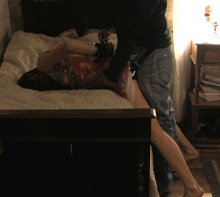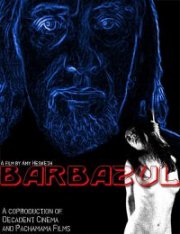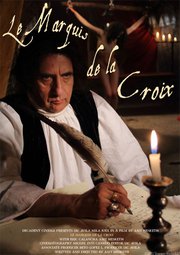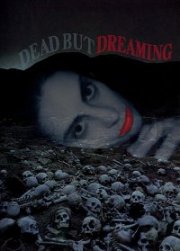An Interview with Amy Hesketh, Director of Sirwiñakuy
“Sirwiñakuy” refers to an indigenous custom still practiced by some Aymaras in Bolivia, in which a man takes his potential wife, basically kidnapping her, to his house to live with him. It’s like a try-out. If they get along, she cooks and cleans well, she gets along with his family, they marry. If it doesn’t work out, she goes back to her house, more or less in shame.
How did you actually first learn about the indigenous tradition of sirwiñakuy, and what inspired you to translate this into a modern day story?
I learned about the sirwiñakuy living here in Bolivia, it’s commonly talked about, joked about, etc. Also, a friend of Jac’s, Henriette Szabo PhD., is an anthropologist, a specialist in Bolivian indigenous groups, she defined it really well in her Dictionary of Bolivian Anthropology.
I didn’t actually translate the sirwiñakuy into my story, I wrote the script long before I came to Bolivia, and adapted it to here, changed the characters a bit, but made them more or less universal. When reading the script, Jac Avila [Jac Avila interview - click here] pointed out to me that it was a modern day sirwiñakuy, so the movie carries that title.
 |
The major differences between my Sirwiñakuy and the indigenous practice are that Anouk and Luis are testing each other, and she doesn’t lift a finger in the entire movie, he does all of the cooking and cleaning.
I think a key factor concerning the atmosphere of Sirwiñakuy is the apartment most of it was filmed in. How did you get the place, and did you already have it (or some place similar) in mind when writing the movie?
The house is really a character in the movie, it’s a family house owned for generations by Veronica Paintoux’s mother’s family, the Bedregals. Veronica worked it out so that we could use the third floor, and the Radisson Hotel was wonderful to give us rooms there for two weeks to lodge Veronica and her family while we invaded their home.

Amy Hesketh directing Veronica Paintoux
|
On to your actors: Veronica Paintoux - how did you get her and what convinced you she would be perfect for the role?
I had never met Veronica, but had seen in her a supporting role in Jac Avila’s film Martyr. The chemistry she and Jac had in that movie made me think they would be good together in Sirwiñakuy. They have tension together, good tension, and that was key to the couple in the story. We called her up and she said that she would do it.
 |
I have to confess that I was really nervous when I met her the first time, greeting her and her youngest daughter at the airport. Veronica is a person who is in constant motion, she never sits for long, I suddenly became unsure that she would be able to play quiet, calm Anouk. Obviously, my fears were unfounded, she channels Anouk wonderfully.
As this was my first film, I was nervous about asking her to do certain things in the movie, like the masturbation scene. But Veronica is a very open, unselfconscious person so she didn’t have a problem with anything.
Jac Avila [Jac Avila & Amy Hesketh interview - click here], who plays the male lead, has been a longtime collaborator of yours. How did you two first meet, actually? And did you write his character with him in mind (at least to a point), and to what an extent are you influenced by him as a director?

Veronica Paintoux and Jac Avila
|
I wrote the male character (Luis Montéz) long before I met Jac, but I tailored it a bit to him when the movie was greenlighted, and changed parts of the character to a type of man that can be found in La Paz. This made the character easier for him to indentify with.
Jac does not influence me as a director. In fact, we tend to have superficial arguments about directing styles, especially when I’m directing him. Later on, he sees the footage and understands why I did what I did, and loves it. We have a mutual respect for each other.
 |
Some actors have told me that working with me is like therapy, in more or less words. I deal with really difficult issues in my films. The actors have to suffer. But I’ve never had anyone hate me after working with me in a movie. And one actress thanked me afterward for putting her through what I did in Barbazul. Catharsis doesn’t come from sitting on the couch.
The more movies I make, the more I delve into the darkness of the human condition. I work out a lot of issues in my movies. At the same time, I can’t take the humor out of my films. Horrible things happen in life, it’s best to laugh and cry about them to understand them better.
With your movie touching a controversial subject, what can you tell us about critical and audience reception of Sirwiñakuy?
The critical reception here in Bolivia was polemic. The comments ranged from calling me daring to saying that I inhabit the last circle of hell. Nevertheless, the movie ran for 5 months because of audience demand. The audience talked about the movie, it’s popularity spread basically by word of mouth. I showed up after a few screenings to talk with the audience as well and their comments were interesting.
 |
A friend of mine said that the movie is like a mirror for the viewer, they see what they project. For instance, in your review, you seem to think that Anouk was raped by Luis in the movie, when she doesn’t say “no” or protest. You’re seeing what you want to see, and a lot of people also did that when they saw the film. Some even swear that they heard her say “no” at the beginning of the sex scene.
 |
 |
 |
Since Sirwiñakuy, you have actually directed two more movies, Barbazul and Le Marquis de la Croix. Want to talk about those for a bit, and how do they compare to Sirwiñakuy?
Each is a different type of film. Sirwiñakuy is a more intimate story that centers around two characters. The camera, and thus the audience are flies on the wall, voyeurs of what happens in the movie. We see the characters’ cotidian lives as well as the more exciting bits. Everything combines into the events, large and small, that shape their relationship.
Barbazul is based on Bluebeard, the children’s story written by Charles Perrault in 1697. Barbazul (a contraction of “barba” (beard) and “azul” (blue)) is a serial killer, he kills his wives. I chose to make the movie a bit campy, and worked with cinematographer Miguel Canedo to bring something of a classic Italian 70’s cinema look to the movie. He basically read my mind and made it into image. The visual aspect also helps the viewer digest what they’re seeing because the subject matter is very dark, and I don’t gloss over that darkness.
Le Marquis de la Croix is more full-on camp, it’s based on the writings of the Marquis de Sade, and I kept some of the dark humor present in his stories. After Barbazul I wanted to make a really violent sexy film, more grindhouse style, and this movie popped into being. After a couple of weeks of shooting, of course. People keep asking me when this one will be released, because they’ve seen some of the photos from the shooting.
You have recently also starred in Jac Avila's upcoming Dead But Dreaming [Jac Avila interview - click here] - a few words about that one?
We’re still shooting Dead but Dreaming, a vampire epic taking place in several different eras. I have a difficult role, lots of really awful things happen to me in the movie. But it’s a good role with a good arc. That’s important to me as an actor, the character arc. She’s completely different from Mariana in Maleficarum.
Any future projects you'd like to talk about?
We’re planning to shoot my fourth movie this year, called Adela (working title), about a family of vampires. It’s loosely based on the Robert Louis Stevenson short story Ollala, which was the first story to go into the idea of genetic vampirism, what was later discovered to be a rare genetic disease called porferia.
Your website, Facebook, whatever else?
http://vermeerworks.com
http://movies.vermeerworks.com
http://facebook.com/amyhesketh
http://amyhesketh.blogspot.com
Anything else you are dying to mention and I have merely forgotten to ask?
Sirwiñakuy is now avilable on DVD at http://vermeerworks.com/store/dvds and and for download at http://movies.vermeerworks.com
Thanks for
the interview!
© by Mike Haberfelner

No comments:
Post a Comment